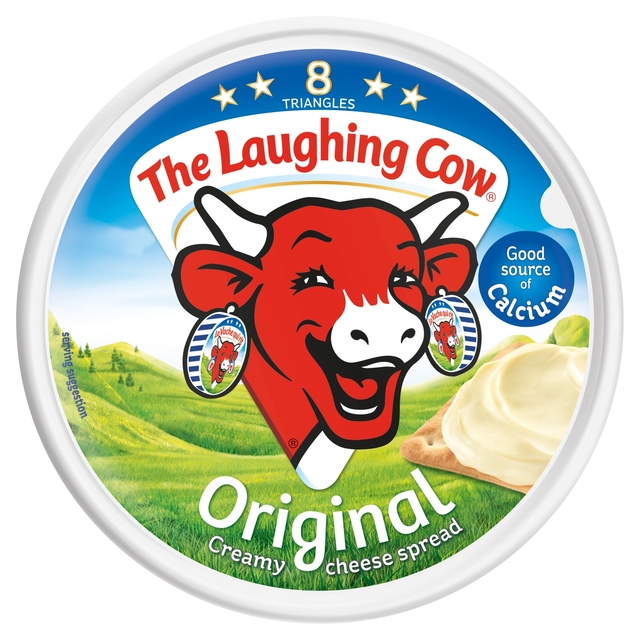How Bel Brand’s collaboration with buzzback successfully restored the iconic presence of their global cheese brand The Laughing Cow.
The Laughing Cow is an instantly recognisable brand, with its iconic red earring-wearing cow and bite-sized triangular shape. In 2012, however, sales started to decline for the brand over an eight-year period. The softening of brand identities over time (in particular, those bearing a beloved mascot!) is something many FMCG companies can find themselves facing. By listening to consumers, Bel Brands worked with buzzback to get to the root of the problem. The Laughing Cow needed to become more visible in store, define usage opportunities for customers, set clear expectations for usage and product experience, plus offer better nutrition and taste.
Born in 1921, The Laughing Cow has grown into a global phenomenon, with brand extensions including light versions, multiple flavours and later dipping varieties evolving and expanding over its nearly 100-year history. More than 350 million wedges are now produced annually in the US, representing a four percent share of the $2 billion US retail snack cheese market.
When sales started to decline, the team at Bel Brands found themselves at a major crossroads. They needed to determine whether to make major changes to return the brand to business growth or continue to make minor adjustments in positioning and communications to soften its decline. Looking back Vikki Cathey, Strategic Insights Manager for Bel Brands USA, says, “It was a tough challenge. The brand has strong, positive brand sentiment from consumers, but this was just not translating to sales and share of household. We needed to really dive in and understand the consumer changes.”
The consumer landscape was quickly changing, and the team needed to explore multiple dimensions of the brand experience among current users, but, importantly, to identify triggers and barriers causing declines and preventing brand growth – especially among Millennials and younger cohorts representing the future of the franchise.
The solution focused on a consumer-centric approach – with the Bel team collaborating with buzzback on a multi-phase, mixed-methods approach. The research involved exploring the category and doing a deep dive into the consumer mindset around brand experience and use. All aspects of the product were considered – from communications and positioning to packaging and in-store/merchandising.
Immersive qualitative forums, including digital shop-alongs and two qual-quant exploratory sessions pre- and post-trial of the product, gain a foundational understanding of then-current consumer perceptions of The Laughing Cow.
The research revealed that the quirky but lovable red cow wearing earrings is still a strong brand with unique and differentiated positioning, is perfectly portioned and creamy to taste. However, she wasn’t always top of mind, and consumers weren’t easily locating her in store, nor aware of the different usage opportunities.
Grounded in the research, the team reinvigorated the brand’s positioning and activated against her challenges. That fun-loving red cow with the earrings had a huge turnaround.
The Laughing Cow team went from research to relaunch in just a few months, deploying a series of focused marketing initiatives, including repositioning the brand with new purpose, adding recipes to its website to reinforce healthy snacking options, developing effective in-store merchandising, and highlighting Millennials in its TV ads as well as promote key nutritional benefits. Media exposure even included presence in Times Square with 28 million impressions plus a broad social media campaign. This resulted in significant increases in velocity and category growth.
For the first time in more than eight years, The Laughing Cow experienced massive and consistent growth. This measurable brand turnaround illustrates the importance of being customer-centric and understanding consumers’ needs – an iconic example of how brands can effectively reposition in the market to regain competitiveness.



